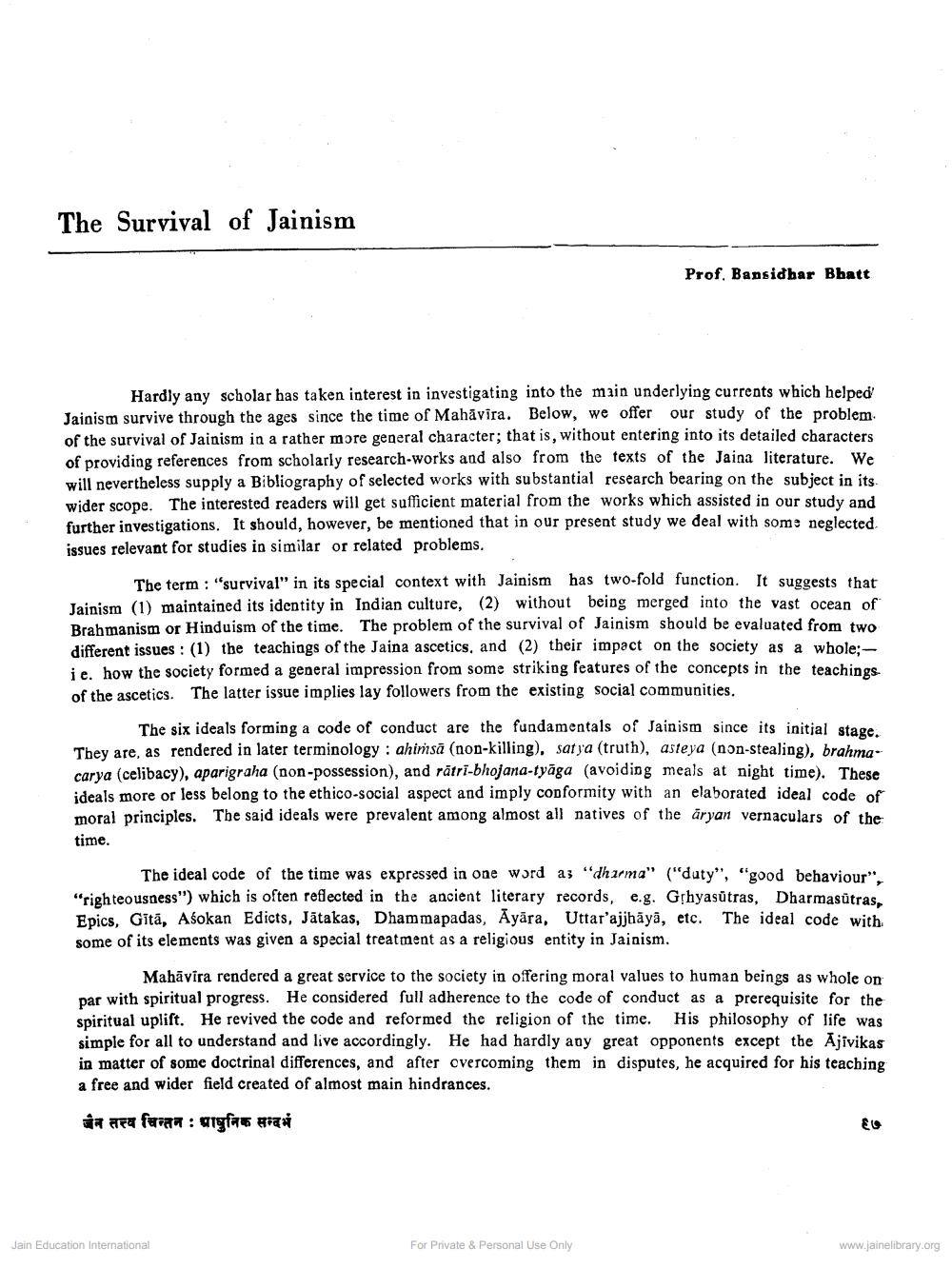________________
The Survival of Jainism
Prof. Bansidhar Bhatt
Hardly any scholar has taken interest in investigating into the main underlying currents which helped Jainism survive through the ages since the time of Mahāvira. Below, we offer our study of the problem of the survival of Jainism in a rather more general character; that is, without entering into its detailed characters of providing references from scholarly research-works and also from the texts of the Jaina literature. We will nevertheless supply a Bibliography of selected works with substantial research bearing on the subject in its wider scope. The interested readers will get sufficient material from the works which assisted in our study and further investigations. It should, however, be mentioned that in our present study we deal with some neglected issues relevant for studies in similar or related problems.
The term : ''survival" in its special context with Jainism has two-fold function. It suggests that Jainism (1) maintained its identity in Indian culture, (2) without being merged into the vast ocean of Brahmanism or Hinduism of the time. The problem of the survival of Jainism should be evaluated from two different issues : (1) the teachings of the Jaina ascetics, and (2) their impact on the society as a whole: - ie. how the society formed a general impression from some striking features of the concepts in the teachings. of the ascetics. The latter issue implies lay followers from the existing social communities.
The six ideals forming a code of conduct are the fundamentals of Jainism since its initial stage. They are, as rendered in later terminology : ahimsă (non-killing). satya (truth), asteya (non-stealing), brahmacarva (celibacy), aparigraha (non-possession), and rätri-bhojana-tyāga (avoiding meals at night time). These ideals more or less belong to the ethico-social aspect and imply conformity with an elaborated ideal code of moral principles. The said ideals were prevalent among almost all natives of the aryan vernaculars of the time.
The ideal code of the time was expressed in one word az "dharma" ("duty", "good behaviour". "righteousness") which is often reflected in the ancient literary records, e.g. Gshyasūtras, Dharmasutras. Epics, Gītā, Asokan Edicts, Jātakas, Dhammapadas, Ayāra, Uttar'ajjhāyā, etc. The ideal code with some of its elements was given a special treatment as a religious entity in Jainism.
Mahāvira rendered a great service to the society in offering moral values to human beings as whole on par with spiritual progress. He considered full adherence to the code of conduct as a prerequisite for the spiritual uplift. He revived the code and reformed the religion of the time. His philosophy of life was simple for all to understand and live accordingly. He had hardly any great opponents except the Ajivikas in matter of some doctrinal differences, and after overcoming them in disputes, he acquired for his teaching a free and wider field created of almost main hindrances.
जैन तत्त्व चिन्तन : माधुनिक सन्दर्भ
Jain Education International
For Private & Personal Use Only
www.jainelibrary.org




